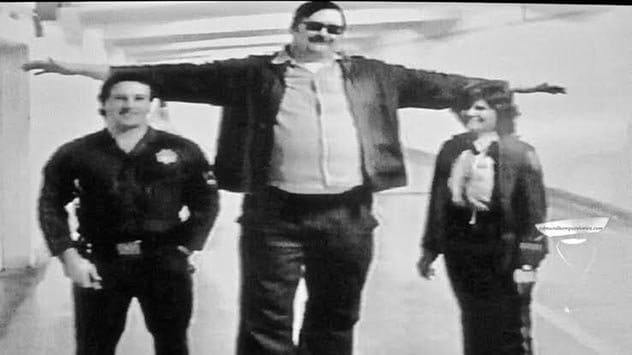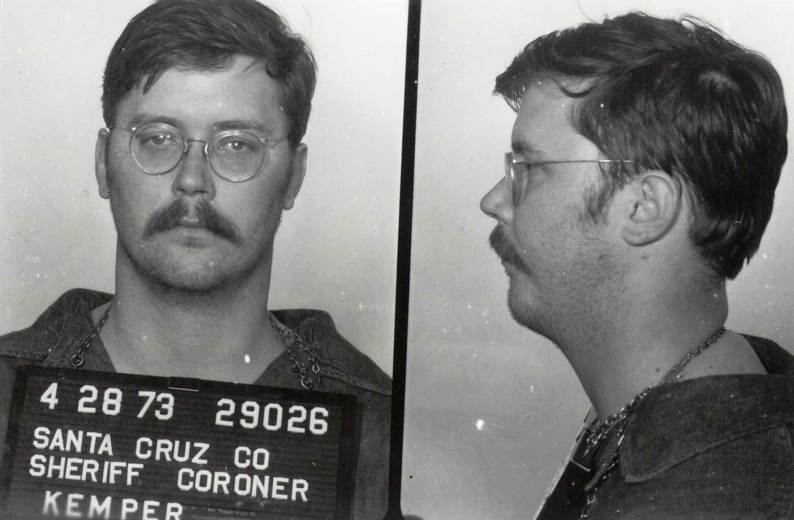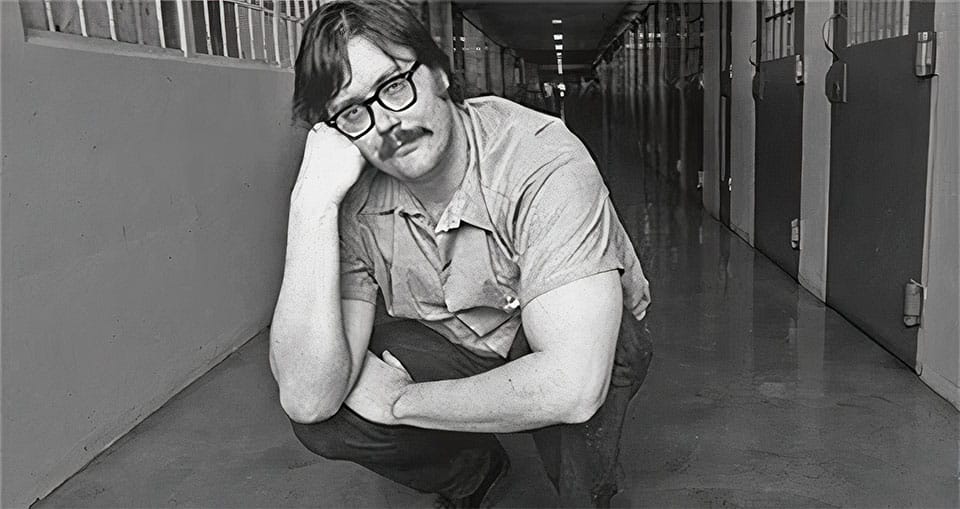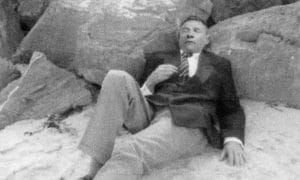Edmund Emil Kemper III, or simply, Ed Kemper, is the most famous Serial Killer, or at least one of the most famous in the world. It was from him that the police realized the need to understand the mind of a serial killer.
Who was Ed Kemper?
Born December 18, 1948, in Burbank, California, Ed was the son of Edmund Kemper II and Clarnell Stage, and had two younger sisters. His childhood was troubled, his parents divorced when he was nine years old, and his mother got custody.
Clarnell had a drinking disorder and was violent, often humiliating her son in various ways. At school he was bullied because of his height, since at the age of 15 Ed was 6′ 9″ tall (1.93m). He developed antisocial behavior and spent most of his free time torturing and killing domestic animals such as dogs and cats.
He also dissected these animals. Once he even buried a live cat, dug it up minutes later to see if it was still breathing, and then ripped its head off.
When asked about these practices, Kemper always denied everything.
The family atmosphere was bad, Ed and his mother argued a lot. But every story has different points of view. According to Clarnell, she was very afraid of her son, and even forced him to sleep in a room in the basement, because of the fear that he would sexually abuse his sisters.
According to reports from one of his sisters, Kemper confessed to her that he had fallen in love with his teacher, but knew that the only way to get a kiss from her was to kill her. His sister got shocked and told her mother, who violently beat Kemper as a way to scold him. The boy never received psychological support.
Escape from home
At the age of fourteen, unhappy with the life he was having with his mother, Ed ran away from home to live with his father, as they always had a good relationship. His father welcomed him, but because of Ed’s conflicts with his stepmother’s son from her first marriage, he was taken to live with his paternal grandparents soon after.
Ed’s grandmother was very controlling and aggressive, his grandfather was good to him, but did nothing about his wife’s terrible treatment to Ed. The boy’s anger grew, especially when he discovered that his father had changed his phone number so as not to be bothered by him.
On August 26, 1964, Ed and his grandmother had a disagreement in the kitchen. The angry boy took the Rifle he had gotten for Christmas from his grandfather and went out hunting, but his grandmother screamed at the window, telling him to go back.
Kemper decides to return, enters the kitchen, and as his grandmother turns her back on him, he shoots her in the head. With her already on the floor, he fires two more shots into her back and decides to stab her several times after she is dead. A towel is wrapped around the victim’s head, and he drags her body to her room.
About twenty minutes later, Ed notices his grandfather approaching the house. He goes towards him and pretends that nothing has happened, as soon as his grandfather turns his back on him he also shoots him in the head and drags his body into the garage. He calmly cleans up the whole crime scene.
When the adrenaline finally subsides, Ed calls his mother and tells her what happened, she tells him to call the police immediately. When the authorities arrive on the scene, they find the teenager sitting on the front door steps.
In a statement at the police station, Ed said that he killed his grandmother just to experience what it felt like to kill someone, and the killing of his grandfather was in order to spare him the sadness of knowing that his wife had died. All this was said in a cold and rational way, and he did not show any regret.
Psychiatric hospitalization
Soon after the incident, Kemper was diagnosed with schizophrenia, which was later confirmed since he didn’t have hallucinations or dissociation from reality. His condition was defined as a personality disorder.
During his hospitalization Ed Kemper demonstrated a high social power, even being chosen as personal assistant of his psychiatrist. This position gave him access to all the tests administered to patients, meaning that he knew what to say each time he was examined. In December 1969, at the age of eighteen, he was paroled and returned to live with his mother.
Three years later, in 1972, Kemper was considered fully rehabilitated and his criminal record was expunged. He no longer seemed to be a danger, but even his mother considered him to have emotional problems.
His biggest dream was to be a cop.
Ed Kemper took several tests in an attempt to join the police, and passed them all, but his height, which was 6′ 9″ (1.93 m), prevented him from being hired. His consolation was to collect firearms and knives, and he even bought a car of the same model used by the local police, a Ford Galaxie 500.

The relationship between Kemper and his mother was going very bad again, she often humiliated him by saying that no woman would ever love him and made fun of his physical appearance.
At this time Kemper began offering rides to students on campus, he said that his intention was to be around women. In a statement he stated that he gave rides to more than one hundred and fifty young girls during this period.
Ed Kemper kills again
On May 7, 1972, Kemper was driving around aimlessly when he decided to offer a ride to two girls and promised to take them to Stanford University. They were Mary Ann Pesce and Anita Luchessa, both eighteen years old.

What the girls didn’t realize was that Ed had already prepared everything for the crime, including modifying the car doors so that they would only open from the outside, in order to prevent his victims from escaping. The girls were taken to an isolated wooded area, where he handcuffed Mary while he kept Anita in the trunk of the car.
He strangled Mary Ann and then did the same to Anita. He put the bodies in the trunk, along with his arsenal of guns and knives, and drove towards his house. On the way, he was even stopped by a policeman, because his taillight was off. Soon after he was released, a quick external inspection of the vehicle revealed nothing wrong.
When he got home, Kemper put the bodies in sexual positions and photographed them. Soon after, he had sexual intercourse with them, in an explicit act of necrophilia. Later he dismembered the bodies, divided them into garbage bags, and abandoned them on a nearby mountain.
Aiko Koo and Cindy Shall, the next victims
Later that year, on September 14, 1972, Kemper approached 15-year-old Aiko Koo, who decided to take a ride instead of waiting for the bus to take her to a dance class. She would meet the same fate as Mary and Anita.
This time Kemper rapes Aiko while she is still alive, and then suffocates her to death. The body is put in the trunk and Ed decides to stop by a bar for a few drinks. At home, the girl’s body suffers the same cruelties as before and is discarded as well.
On January 7, 1973, Kemper strikes again. This time he approaches and offers a ride to Cindy Schall, an eighteen-year-old student. Acting in the same manner, Cindy was taken to a closed wooded area, killed with a pistol shot, and placed in his trunk.
When Kemper arrives home, he notices that his mother has not yet left for work. He decides to hide the body in the closet, leaving it there all night. In the morning, when he saw that he was alone, he dragged the body into his mother’s bathtub, performed sexual acts on it, and dismembered it. The remains were thrown off a cliff, but he decided that he would keep Cindy’s head to satisfy himself sexually for a while longer.
Days later he decided to bury Cindy’s head in the garden of his house, right in front of his mother’s room. The explanation he gave for this is that Clarnell liked to be admired, and Cindy’s head buried with her eyes toward the window would fit this well.
The police are on Ed Kemper’s trail
By February 1973, the police were already profiling the criminal who used to offer young women rides. It was reported in the media that the girls should only get into cars that had the university sticker attached. To everyone’s misfortune, Ed’s mother worked on campus, and it was very easy to get a sticker for her car.
Alice Helen Liu, 20, and Rosalind Thorpe, 23, were the next victims, and their bodies were dumped like the previous ones. A curiosity about his modus operandi was that if he used a firearm to kill a victim, he would remove the projectile from the victim’s body to make police investigation more difficult.
Another fatal victim, this time his mother
On the evening of April twenty, 1973, Kemper’s mother comes home late and extremely drunk after a party. Ed woke up and became angry at Clarnell’s noise. So he watched her for a few minutes.
Mocking Ed, his mother says, “Are you going to stand there all night?“. He answers no, turns his back and goes to his room. About half an hour later, Kemper returns armed with a knife and a hammer.
He beats her violently, and with the knife cuts her throat and rips her head off. In a statement Kemper said that he satisfied himself sexually while inserting his penis into the mouth of his already decapitated mother. When he got tired, he pinned her head to the wall and played at throwing darts for about an hour.
Finally, he crushed the skull bones with his feet, ripped out her tongue and larynx, and threw them into the crusher, which jammed. According to Kemper, even the crusher couldn’t handle digesting her vocal cords, since she had spent her entire life screaming and complaining.
The body was hidden in a closet and he went out drinking. On his way back he called his mother’s best friend Sally Hallett, 59, and invited her to dinner and then to a movie. Upon arriving at the house, Sally was strangled and also had her body placed in the closet.
Ed gets into his car and drives to Pueblo, Colorado. He thought that by now the police would be desperate in their search. He took a huge arsenal with him because he was sure he would fire shots at the authorities. But the police didn’t even know who Ed Kemper was.
Kemper was frustrated when he realized that he would not receive the attention he was imagining, so he decided to call the police and confess his crimes. The last bodies were then found in his mother’s house, and he waited for the police until he was arrested.
The criminal said that he decided to surrender because after killing his mother, all the anger he had inside him was gone. He no longer felt the desire to commit any crime.

Arrest and trial
At the trial in 1973, he was found sane and guilty of murder. Kemper requested that he receive the death penalty for his crimes. However, the death penalty had been suspended in California in 1972, and instead he received eight consecutive life sentences.
He even attempted suicide twice in jail, but was saved by prison guards.
Since then, he has been incarcerated at the California Medical Facility in Solano County. Although he was eligible to apply for parole, Kemper always refused to exercise it and said he was happy in prison.

The world’s most famous serial killer
After being arrested and acting like he was rehabilitated, Ed Kemper became an important source of information for the FBI — you can see Mindhunter series.
In several interviews, the killer explained to officers John Douglas and Mark Olshaker what he considered to be behind his actions. His statements were essential for the development of the method used to this day by the authorities to identify serial killers, and even for the arrest of other criminals — as shown in the Netflix series.
There are also several literary productions about the serial killer available on Amazon.










